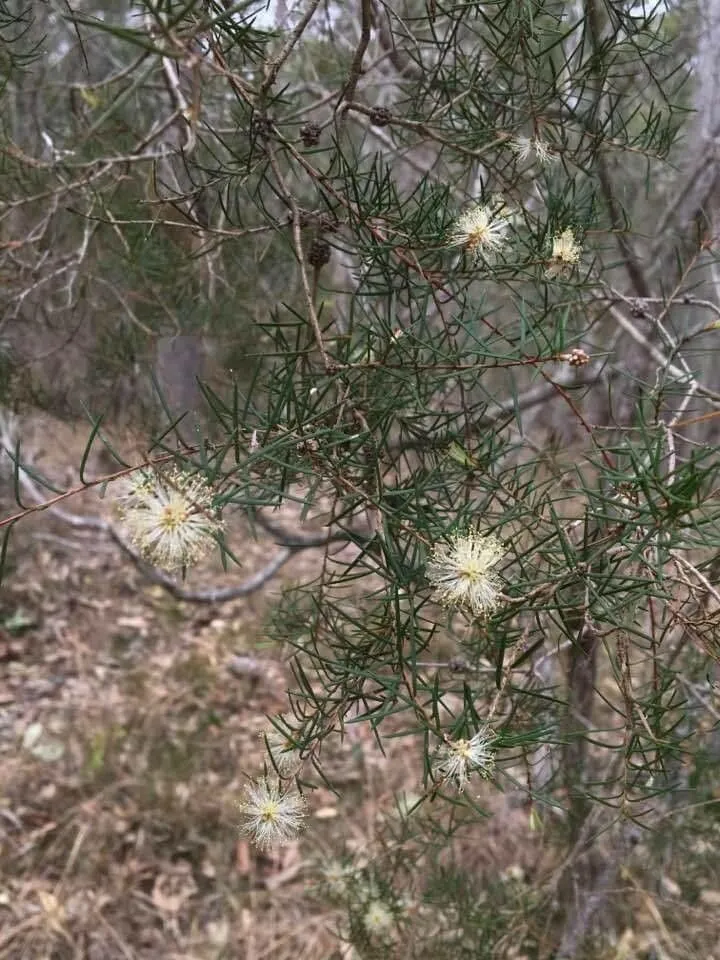
Author: (Sol. ex Gaertn.) Sm.
Bibliography: Trans. Linn. Soc. London 3: 276 (1797)
Year: 1797
Status: accepted
Rank: species
Genus: Melaleuca
Vegetable: Unknown
Observations: E. Australia
The Prickly-leaf Paperbark, scientifically known as Melaleuca nodosa, is a notable member of the Myrtaceae family, widely recognized for its unique and resilient properties. This species was first documented in 1797 in the esteemed Trans. Linn. Soc. London, reflecting its longstanding significance within botanical studies. Renowned botanists Solander and Gaertner initially explored and classified this plant, with formal documentation and description credited to James Edward Smith.
Native to Eastern Australia, Melaleuca nodosa thrives in this region’s diverse environmental conditions. This plant typically adopts a shrub-like formation, contributing to the rich and varied landscapes of its native habitat. The common name “Prickly-leaf Paperbark” aptly describes the plant’s distinct foliage, which features small, sharp leaves that give it a prickly texture, a characteristic trait among many Melaleuca species.
The Prickly-leaf Paperbark is not only identified by its hardy leaves but also by its fascinating blooming patterns. It is known for producing clusters of cream to pale yellow flowers, which bloom prolifically, adding aesthetic and ecological value to their surroundings. These blossoms attract a variety of pollinators, playing a vital role in the local ecosystems where the plant is found.
Adapted to tolerate challenging conditions, the Melaleuca nodosa can often be seen in both coastal zones and inland environments, indicating its versatility and robustness. It is also known to possess a high degree of resistance to common pests and diseases, which further underscores its resilience and adaptability.
Beyond its ecological contributions, the Prickly-leaf Paperbark holds cultural and practical significance. In horticulture and landscaping, it is valued for its aesthetically pleasing appearance and low maintenance requirements. This makes it a favored choice for domestic gardens and public green spaces seeking to promote native flora.
In summary, Melaleuca nodosa, or the Prickly-leaf Paperbark, is a distinguished plant species worth appreciating for its botanical characteristics, environmental adaptability, and ecological importance. Its historical documentation by pioneering botanists and sustained relevance in both natural and cultivated landscapes underscore its enduring appeal and significance within the plant world.
Eng: prickly-leaf paperbark
En: Prickly-leaf paperbark
Taken Jul 25, 2022 by Michal Svit (cc-by-sa)
© copyright of the Board of Trustees of the Royal Botanic Gardens, Kew.
© copyright of the Board of Trustees of the Royal Botanic Gardens, Kew.
Family: Myrtaceae Author: (F.Muell.) K.D.Hill & L.A.S.Johnson Bibliography: Telopea 6: 402 (1995) Year: 1995 Status:…
Family: Rubiaceae Author: Pierre ex A.Froehner Bibliography: Notizbl. Bot. Gart. Berlin-Dahlem 1: 237 (1897) Year:…
Family: Sapindaceae Author: Koidz. Bibliography: J. Coll. Sci. Imp. Univ. Tokyo 32(1): 38 (1911) Year:…
Family: Asteraceae Author: A.Gray Bibliography: Pacif. Railr. Rep.: 107 (1857) Year: 1857 Status: accepted Rank:…
Family: Fabaceae Author: Medik. Bibliography: Vorles. Churpfälz. Phys.-Ökon. Ges. 2: 398 (1787) Year: 1787 Status:…
Family: Aspleniaceae Author: (Cav.) Alston Bibliography: Bull. Misc. Inform. Kew 1932: 309 (1932) Year: 1932…